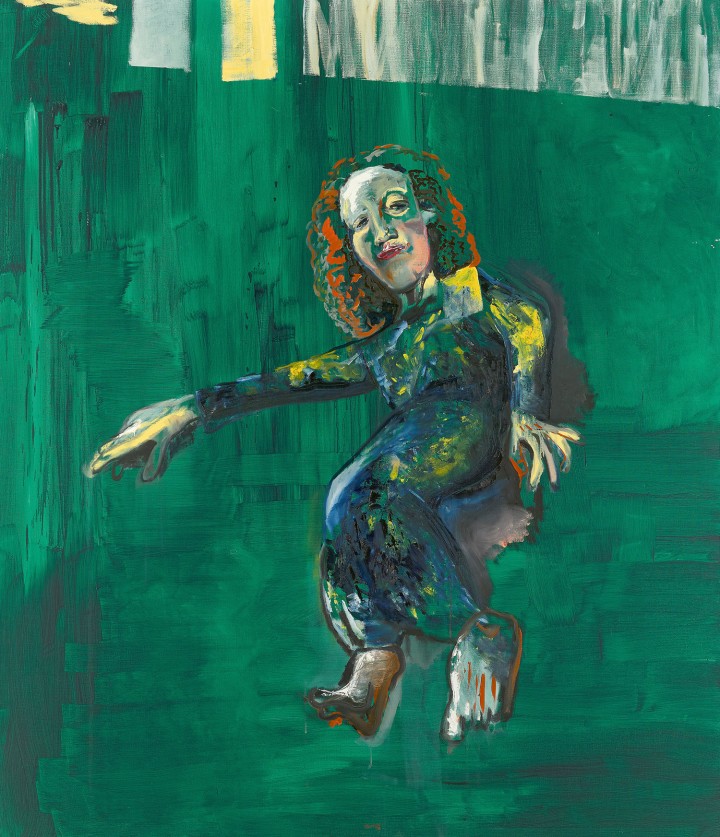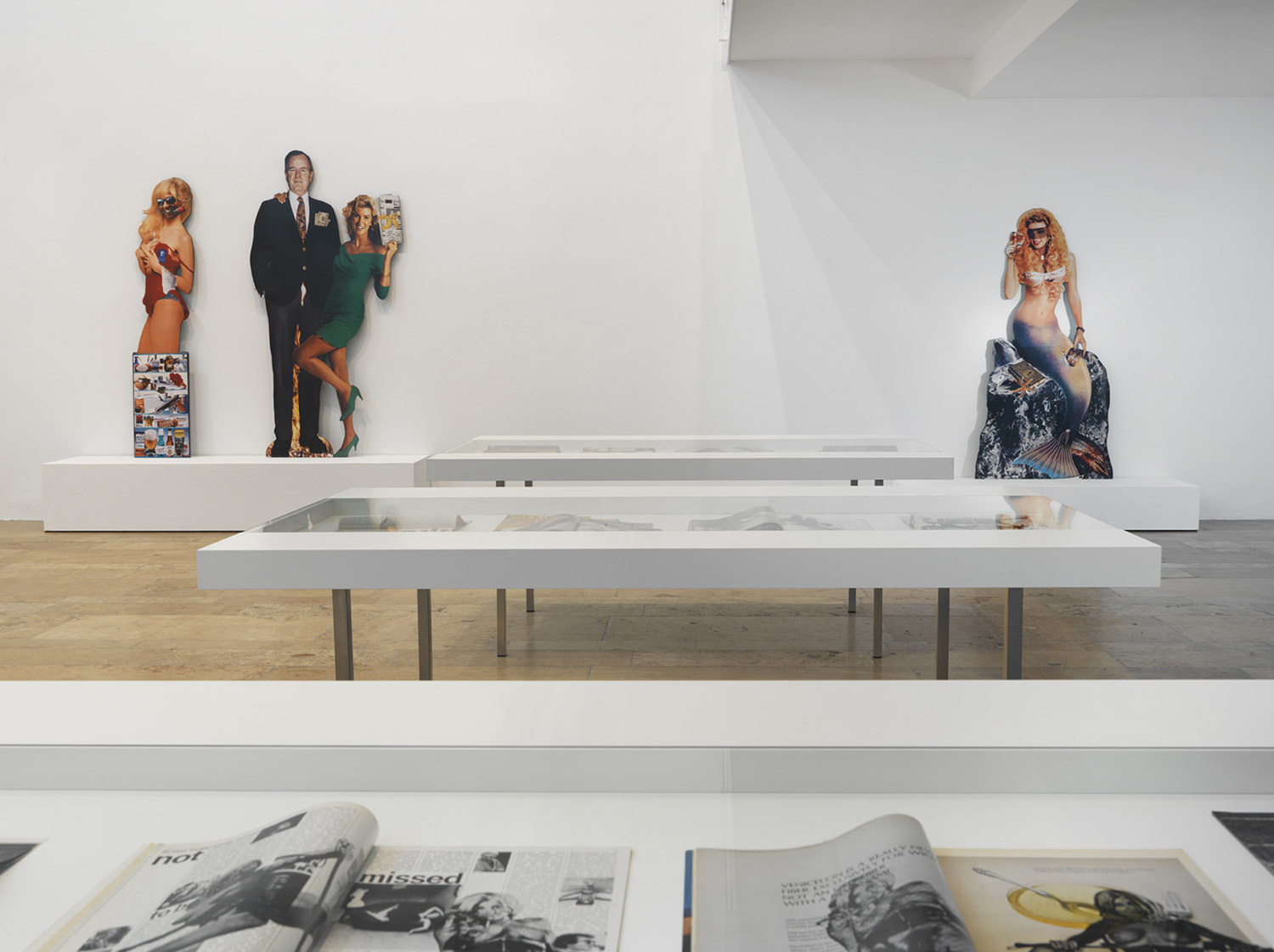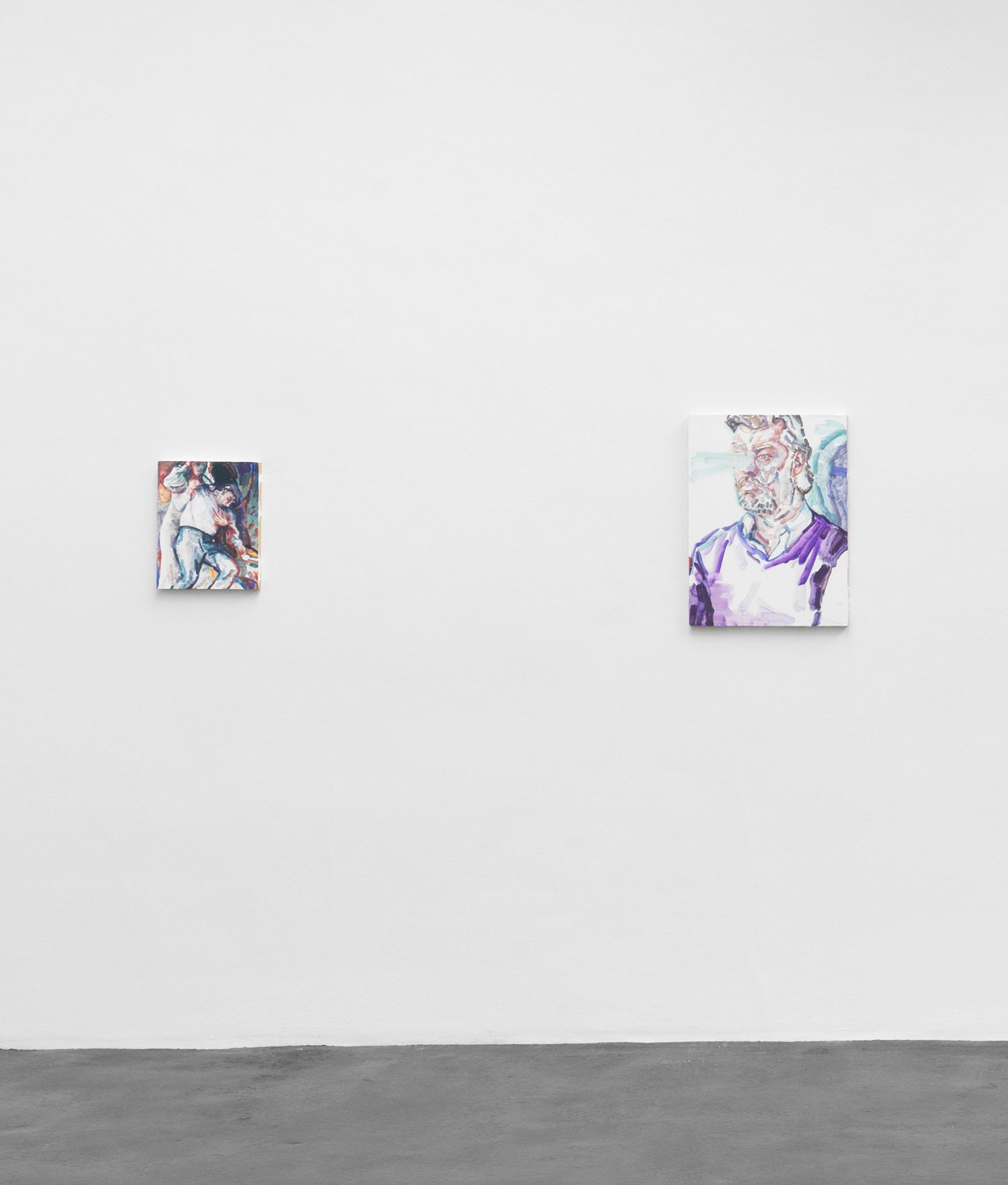The photographer Elfie Semotan, Martin Kippenberger’s widow, has said, “I envy painters their ability to completely create their reality.” In the last year of his life, Kippenberger produced eight paintings, based on her photographs, which might have been intended to arouse that envy. The eleven photographs, here presented in conjunction with the paintings, impel a comparison between the photographs as model and painting’s transformation of them. Featuring haute couture clothes, but modeled by the wrong sex or overshadowed by overtly sexual gestures, Semotan’s images loosely inhabit the fashion photography genre. A model licks what looks like a glass shell. Another suggestively strokes the narrow neck of a vase between her legs. Kippenberger, as the overweight but still handsome roué, models a lush Issey Miyake print dress.
The paintings are not “photographic”; indeed, they show contempt for photography’s limitation to the facts. If this is an uxorious homage, it is belied by its imaginative virtuosity. Semotan’s photographs are polite theater compared to Kippenberger’s shameless painterly distortions. A photo of a female model with raised curls, which its title indicates is based on the oversized quiffs of the 1980s rock band Leningrad Cowboys, becomes a man with a Desperate Dan jaw and three muscle-bound legs. The chair she sits on has been removed so she appears to levitate. Kippenberger has returned the photograph to the gender of its inspiration. A painting of Silvia Cerhakova has made an innocuously provocative spread-legged pose into a haunting image of vulnerability. The young Katzi Reiter has become a bloated middle-aged Madame with a club foot.
Kippenberger’s series was originally exhibited, one at a time, in a Vienna shop window in 1996. He stipulated that the lights should remain on until two in the morning, after which any viewing would take place in darkness. It is an appropriate framing conceit for one of Kippenberger’s final subversive gestures: to characterize painting as fashion-based shop-window merchandise, its image fading into the city night.




